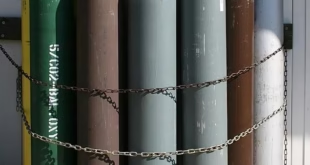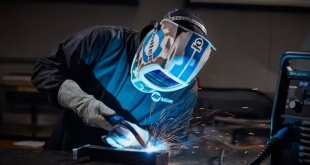Weld Bead Size and Deposition Rate
Welding might look like sparks and smoke to the untrained eye, but behind every strong weld lies a balance of science, skill, and control. Two key factors—weld bead size and deposition rate—play an outsized role in determining not only the appearance of a weld but its structural integrity and efficiency.
In every welding process, you’re essentially building up material by melting a filler metal into a joint. The amount you deposit and the way it forms—its size, shape, and fusion—all fall under these two variables. A small change in one can radically alter the outcome of a weld.
How They Influence Each Other
Think of deposition rate as the speed at which paint is coming out of a spray can, and bead size as the width and thickness of the line you’re painting. If the paint flows too fast, you get a glob. Too slow, and the line is faint and ineffective. In welding, the same balance affects joint strength, productivity, and cost.
Understanding Weld Bead Size
Definition and Measurement
Weld bead size refers to the physical dimensions of the weld once solidified. This includes the bead width, height (reinforcement), and penetration depth. It’s typically measured in millimeters or inches, using tools like fillet gauges or calipers.

Types of Weld Beads
- Fillet weld beads: Triangular in cross-section, used in lap, T, and corner joints.
- Groove weld beads: Fill grooves in butt joints.
- Surfacing beads: Laid on a flat surface for buildup or hardfacing.
- Weave vs. stringer beads: Weave beads are wider with oscillation, stringers are narrow and straight.
Key Factors Affecting Weld Bead Size
- Electrode Type and Size: A larger electrode deposits more filler metal per inch, naturally increasing bead size.
- Amperage and Voltage: Higher amperage increases heat input, which can widen and deepen the bead. Voltage affects arc length and bead profile.
- Travel Speed and Technique: Too slow? You’ll pile up too much metal. Too fast? Your weld becomes thin and may lack fusion.
- Joint Design and Fit-up: Poorly prepared joints need larger beads to bridge gaps, which can compromise quality.
What Is Deposition Rate in Welding?
Definition and Units
Deposition rate is the weight of filler metal deposited in a given time, usually in pounds or kilograms per hour. It measures welding productivity.
Deposition Rate vs. Deposition Efficiency
- Deposition rate = actual filler metal melted.
- Deposition efficiency = proportion of electrode that becomes weld metal.
For instance, SMAW has lower efficiency due to slag and stub loss, while MIG is much more efficient.
Typical Deposition Rates for Common Processes
SMAW
1.5–3.0 lb/hr (0.7–1.4 kg/hr)
Limited by electrode change time.
GMAW (MIG)
4–12 lb/hr (1.8–5.5 kg/hr)
Continuous wire feed = higher productivity.
FCAW
5–13 lb/hr (2.2–6 kg/hr)
Higher than MIG due to flux-cored wire.
SAW
10–30+ lb/hr (4.5–13.6+ kg/hr)
Extremely high for heavy sections.
The Relationship Between Bead Size and Deposition Rate
Direct and Indirect Correlation
Larger deposition rates typically yield larger beads—but that’s not always desirable. You must match the bead size to joint design. Oversized beads waste metal and time.
Balancing Penetration, Fusion, and Bead Profile
Too much metal without enough heat results in poor fusion. Too much heat may cause burn-through or distortion.
How Excessive Deposition Can Lead to Defects
Thick beads can trap slag or gas, creating internal porosity. They can also cause excess reinforcement, leading to stress concentrations.
Optimizing Bead Size and Deposition Rate for Different Welding Processes
SMAW (Stick Welding)
Use smaller diameter electrodes for thin metals.
Control deposition with travel speed and amperage.
MIG (GMAW)
Increase wire feed for higher deposition.
Use spray transfer for cleaner, faster welding.
Flux-Cored (FCAW)
Ideal for outdoor, high-deposition tasks.
Adjust voltage to maintain stable arc and proper fusion.
TIG (GTAW)
Precision-based with low deposition.
Add filler manually for tight bead control.
Submerged Arc Welding (SAW)
Excellent for a thick plate.
Use multi-wire heads for even higher deposition.
Process Parameters That Control Both
Current Type (AC/DC)
DCEN (Direct Current Electrode Negative) often yields deeper penetration and higher deposition than DCEP or AC.
Wire Feed Speed
In MIG and FCAW, this directly controls deposition rate. However, arc voltage must be adjusted to match it for stable arc and bead shape.
Travel Speed
Slower travel increases bead size and heat input. But if too slow, it risks defects like undercut or burn-through.
Electrode Angle and Manipulation
A push angle in MIG leads to a flatter bead, while a drag angle in stick can deepen penetration and build up the bead.
Effects of Improper Bead Size and Deposition Rate
Undercut, Excess Reinforcement, and Spatter
Inconsistent control leads to ugly welds, weak joints, or overbuilds that need grinding.
Lack of Fusion and Porosity
Fast travel + high deposition = poor fusion. Trapped gases can cause porosity, especially in flux-cored processes.
Material Waste and Cost Implications
Over-welding costs time, filler, and cleanup. It may also fail visual or ultrasonic inspections.
Techniques to Improve Deposition Rate Without Sacrificing Quality
Preheating and Interpass Temperature Control
This reduces cooling rate, improving fusion and allowing faster travel without sacrificing bead integrity.
Using Higher Efficiency Electrodes or Wires
Switch from SMAW to GMAW or FCAW for productivity jumps. Metal-cored wires also offer excellent deposition.
Oscillation Patterns and Multi-Pass Strategies
Weaving helps fill wider joints. Stringers maintain better fusion in narrow grooves.
FAQs
What’s the ideal bead size for MIG welding mild steel?
A typical fillet weld bead for 1/8” thick mild steel is about 1/8” leg length. It should match the joint design and not exceed the thickness of the base metal.
How can I increase the deposition rate in stick welding?
Use larger diameter electrodes (like 1/8” or 5/32”), increase amperage slightly, and maintain a short arc with proper angle.
Does faster travel speed reduce weld quality?
Yes, if too fast—it can cause undercut, poor fusion, and narrow, weak beads. Balance is key.
What is the impact of electrode diameter on bead size?
Larger electrodes deposit more metal per inch, resulting in a larger bead. But they require higher amperage and control.
How do I measure deposition rate accurately?
Weigh the electrode or wire before and after a timed weld, subtract stub losses, and divide by the time used. Alternatively, monitor wire feed rate and calculate based on feed speed and wire density.
Conclusion
Mastering the balance between weld bead size and deposition rate is essential for every welder, whether you’re laying a root pass or surfacing a buildup layer. It’s not just about laying down metal—it’s about doing it smart, clean, and efficiently. Like tuning an instrument, each parameter affects the harmony of the whole weld. Understand the science, apply the technique, and your welds will sing with strength and precision.
 Welding of Welders All about Welding and Welders
Welding of Welders All about Welding and Welders



